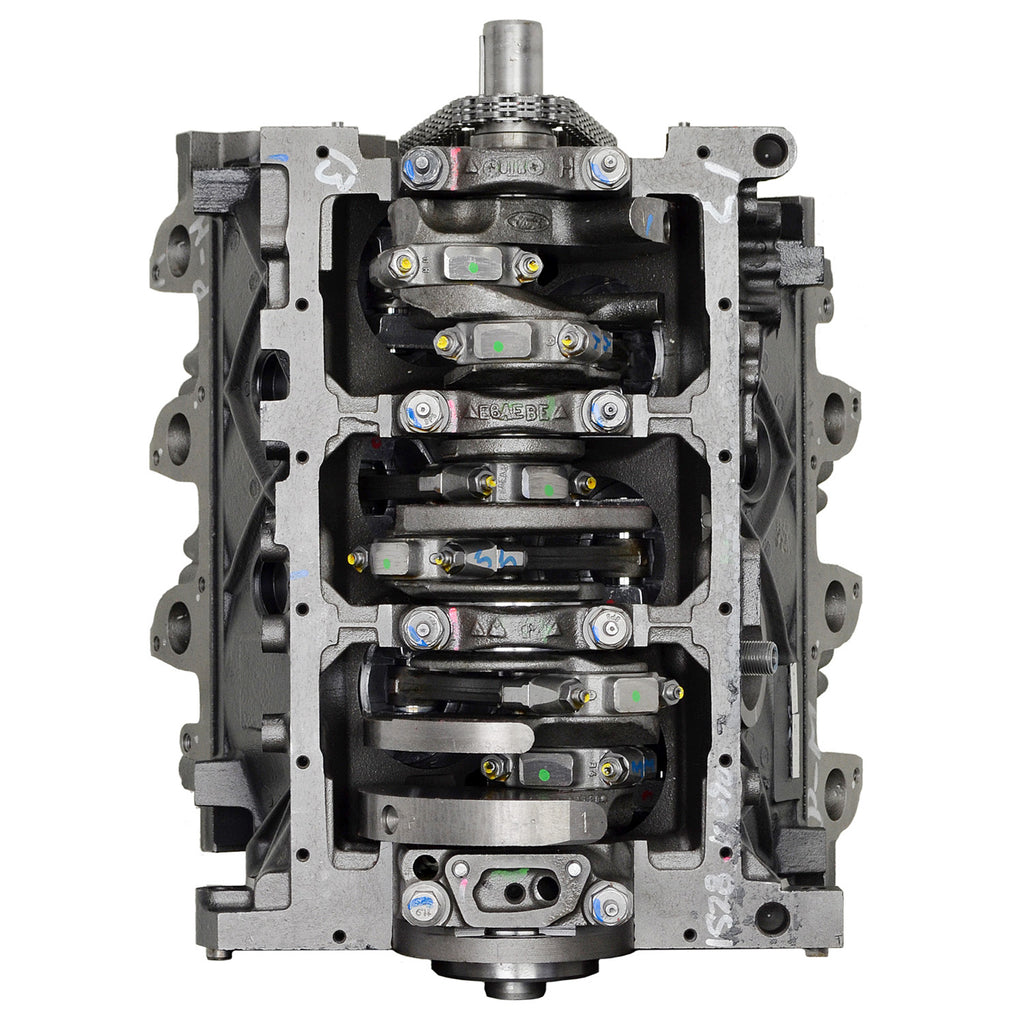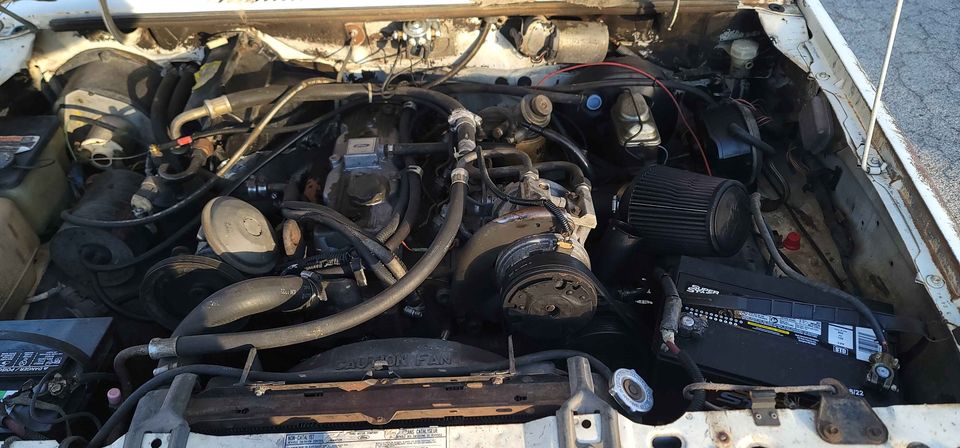Why the 2.2 Ford Ranger Engine Is a Popular Choice for Rugged and Reliable Performance
Why the 2.2 Ford Ranger Engine Is a Popular Choice for Rugged and Reliable Performance
Blog Article
Understanding the Basics of Vehicle Engines: Features, types, and attributes

Review of Auto Engines
An auto engine serves as the heart of a vehicle, converting gas into mechanical power to thrust it forward. This intricate system makes up different parts that function in unison to ensure optimal efficiency and effectiveness. The basic operation of a car engine involves the interior burning process, wherein gas and air are combined, stired up, and gotten rid of to produce power.
The engine's design can substantially impact its performance, fuel performance, and emissions. Trick parts include the cylinder block, pistons, crankshaft, and camshaft, each playing a vital function in the engine's total function. The cylinder block houses the cyndrical tubes where combustion takes place, while the pistons convert the eruptive power from combustion right into straight activity. This activity is then transformed right into rotational power by the crankshaft, making it possible for the automobile's wheels to turn.
Along with these elements, engines frequently utilize numerous systems such as fuel shot, ignition, and cooling down systems to improve efficiency and durability. Understanding the standard mechanics of auto engines is necessary for doing and diagnosing problems maintenance, inevitably contributing to the automobile's dependability and effectiveness gradually.

Kinds of Cars And Truck Engines
Automobile engines can be categorized into several types based on their design, fuel type, and operational principles. 2.2 ford ranger engine. One of the most common groups consist of inner burning engines (ICE), electric engines, and hybrid engines
Interior burning engines, which can be further separated right into gasoline and diesel motor, operate by sparking a fuel-air combination to generate power. Fuel engines are normally lighter and smoother, while diesel motor are a lot more fuel-efficient and offer greater torque.
Electric engines use electric energy kept in batteries to power an electrical motor, providing instantaneous torque and absolutely no emissions during operation. As modern technology breakthroughs, electrical lorries (EVs) are progressively becoming popular for their environmental benefits and reduced running expenses.
Crossbreed engines combine components of both interior burning and electrical engines, allowing for flexible source of power and improved gas efficiency. They can operate in various settings, utilizing either the fuel engine, the electrical motor, or both concurrently.
Each sort of engine has unique benefits and drawbacks, affecting their application in various lorry kinds and market segments, from small cars and trucks to heavy-duty vehicles. Recognizing these kinds is vital for making notified decisions regarding vehicle choice and efficiency assumptions.
Engine Functions Described
Comprehending engine functions is important for understanding exactly how cars run successfully. At the core of any interior combustion engine exists the fundamental procedure of transforming gas into mechanical energy. This procedure begins with the consumption stroke, where air and fuel are attracted into the burning chamber. Following this, the compression stroke presses the air-fuel mixture, raising its temperature level and pressure.
The ignition happens next, firing up the mix and producing a fast expansion of gases. This pressure drives the piston down during the power stroke, which eventually equates right into the rotational motion of the crankshaft. The exhaust stroke after that expels the invested gases from the chamber, giving way for a new why not find out more cycle to start.
In addition to these main functions, engines also include systems that take care of cooling and lubrication, making certain optimal operational temperatures and lowering rubbing between moving parts. This detailed interplay of functions allows the engine to generate the power essential for vehicle propulsion while maintaining efficiency and reliability. Understanding these functions supplies useful understanding into the complexities of vehicle engineering and boosts the capability to identify and attend to engine-related concerns effectively.
Trick Engine Functions
Engine layout incorporates numerous essential attributes that substantially affect efficiency, efficiency, and longevity. One of the most important facets is the engine configuration, that includes inline, V-type, and level layouts. Each configuration impacts the engine's balance, power, and size result, thus affecting general car dynamics.
An additional important feature is the engine variation, referring to the total volume of all cylinders. Bigger displacements usually produce more power but might compromise gas efficiency. Engine materials also play a go to website pivotal function; lightweight and high-strength products, such as light weight aluminum and magnesium alloys, improve efficiency without adding too much weight.
The kind of gas injection system used-- such as multi-port or direct shot-- influences combustion effectiveness and exhausts. Turbo charging and turbocharging are features that enhance engine performance by requiring extra air into the burning chamber, enhancing power outcome without substantially boosting engine size.
Finally, the visibility of sophisticated engine monitoring systems maximizes fuel-air mixture and ignition timing, adding to smoother procedure and better fuel economic situation. Collectively, these features specify an engine's abilities, establishing the structure for its performance and durability in a competitive vehicle landscape.
Maintenance Tips for Engines
Appropriate engine upkeep is vital for ensuring optimal performance and long life, as ignoring regular treatment can result in considerable concerns down the line. To preserve your engine efficiently, start with routine oil changes, usually every 3,000 to 7,500 miles, relying on the sort of oil used. Fresh oil lubes engine elements, lowering rubbing and wear.
Furthermore, monitoring coolant levels is essential to avoid getting too hot. Make certain that the coolant is topped up and remains in click here to read excellent problem to preserve reliable temperature regulation. Consistently evaluate and change air and gas filters, as clogged up filters can impede airflow and gas delivery, compromising engine efficiency.
Additionally, focus on spark plugs and ignition systems. Damaged or used trigger plugs can result in misfiring and lowered efficiency. Checking the battery terminals and links for deterioration is likewise necessary, as a weak battery can affect engine beginning.

Conclusion
In recap, a detailed understanding of vehicle engines includes different kinds, features, and key features that considerably affect automobile performance. Interior burning engines, along with electrical and hybrid options, demonstrate varied systems for power conversion. 2.2 ford ranger engine. Acknowledging the crucial features, such as consumption and exhaust cycles, together with vital engine attributes like setup and gas injection systems, outfits auto proprietors with the knowledge necessary for effective maintenance and operation, eventually enhancing car longevity and effectiveness
An automobile engine offers as the heart of an automobile, transforming fuel into mechanical power to drive it ahead. The basic operation of an auto engine includes the interior burning procedure, in which gas and air are mixed, fired up, and eliminated to create power.
Regularly inspect and change air and gas filters, as stopped up filters can hinder airflow and gas delivery, endangering engine effectiveness. - 2.2 ford ranger engine
In summary, an extensive understanding of vehicle engines encompasses numerous types, features, and key features that substantially affect lorry efficiency. Identifying the crucial functions, such as consumption and exhaust cycles, alongside critical engine attributes like configuration and fuel shot systems, outfits cars and truck proprietors with the understanding essential for effective upkeep and operation, inevitably enhancing lorry long life and efficiency.
Report this page